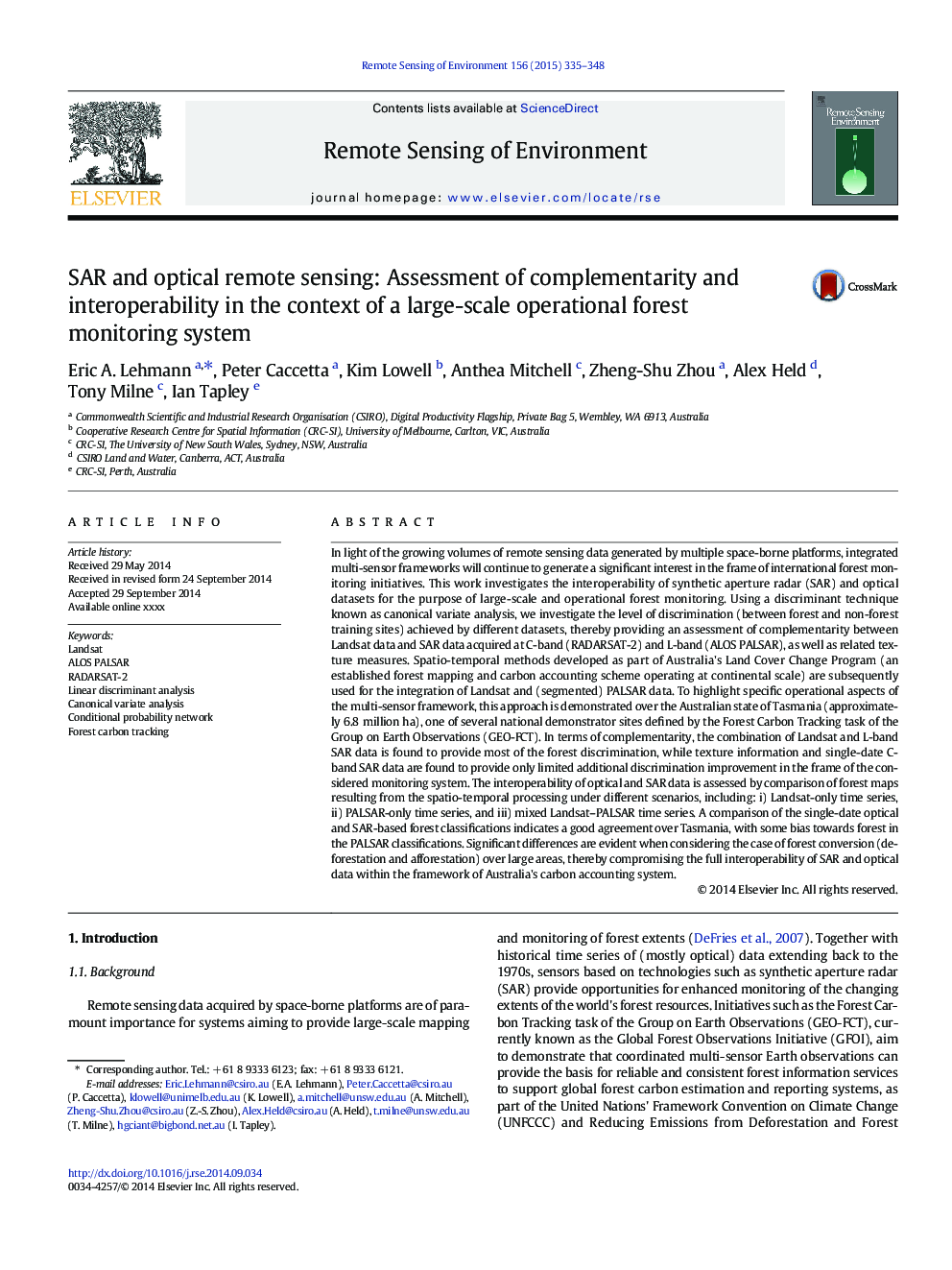| Article ID | Journal | Published Year | Pages | File Type |
|---|---|---|---|---|
| 6346538 | Remote Sensing of Environment | 2015 | 14 Pages |
Abstract
In light of the growing volumes of remote sensing data generated by multiple space-borne platforms, integrated multi-sensor frameworks will continue to generate a significant interest in the frame of international forest monitoring initiatives. This work investigates the interoperability of synthetic aperture radar (SAR) and optical datasets for the purpose of large-scale and operational forest monitoring. Using a discriminant technique known as canonical variate analysis, we investigate the level of discrimination (between forest and non-forest training sites) achieved by different datasets, thereby providing an assessment of complementarity between Landsat data and SAR data acquired at C-band (RADARSAT-2) and L-band (ALOS PALSAR), as well as related texture measures. Spatio-temporal methods developed as part of Australia's Land Cover Change Program (an established forest mapping and carbon accounting scheme operating at continental scale) are subsequently used for the integration of Landsat and (segmented) PALSAR data. To highlight specific operational aspects of the multi-sensor framework, this approach is demonstrated over the Australian state of Tasmania (approximately 6.8 million ha), one of several national demonstrator sites defined by the Forest Carbon Tracking task of the Group on Earth Observations (GEO-FCT). In terms of complementarity, the combination of Landsat and L-band SAR data is found to provide most of the forest discrimination, while texture information and single-date C-band SAR data are found to provide only limited additional discrimination improvement in the frame of the considered monitoring system. The interoperability of optical and SAR data is assessed by comparison of forest maps resulting from the spatio-temporal processing under different scenarios, including: i) Landsat-only time series, ii) PALSAR-only time series, and iii) mixed Landsat-PALSAR time series. A comparison of the single-date optical and SAR-based forest classifications indicates a good agreement over Tasmania, with some bias towards forest in the PALSAR classifications. Significant differences are evident when considering the case of forest conversion (deforestation and afforestation) over large areas, thereby compromising the full interoperability of SAR and optical data within the framework of Australia's carbon accounting system.
Related Topics
Physical Sciences and Engineering
Earth and Planetary Sciences
Computers in Earth Sciences
Authors
Eric A. Lehmann, Peter Caccetta, Kim Lowell, Anthea Mitchell, Zheng-Shu Zhou, Alex Held, Tony Milne, Ian Tapley,
